Plum trees are known across the world for the tasty fruits that they bear. From the sweet purple plums that we find in shops in the Western world to the sour orange Umebushi plums found on the Japanese Plum tree, plum trees grow a variety of different fruits all over the world.
What Plum trees are less known for, however, are the beautiful flowers that adorn them. Nearly every type of plum tree, for at least one part of the year, is covered in gorgeous blossoms. Many plum flower species are bright pink and are similar to the famous Japanese Cherry blossom.
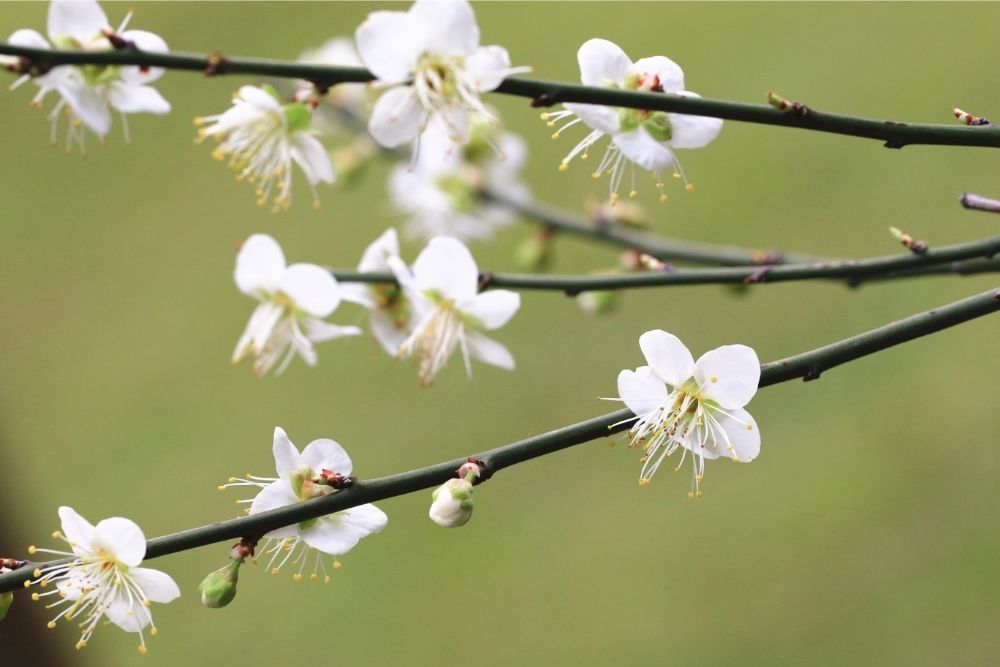
However, plum flowers can also grow in shades of white, purple, and even green. Many plum flowers’ petals are a mix of those colors! Not only do plum flowers look amazing and vibrant, but many species also exude a brilliantly sweet fragrance; they do not just sit pretty, but they also provide a whole floral experience.
We have compiled a list of our favorite types of plum flowers so that you can bring the beauty of Plum trees from across the globe to the confines of your very own garden. Take a look below at a range of Plum trees and their flowers, and see which species you fancy branching out to.
Winter Plum Hellebore
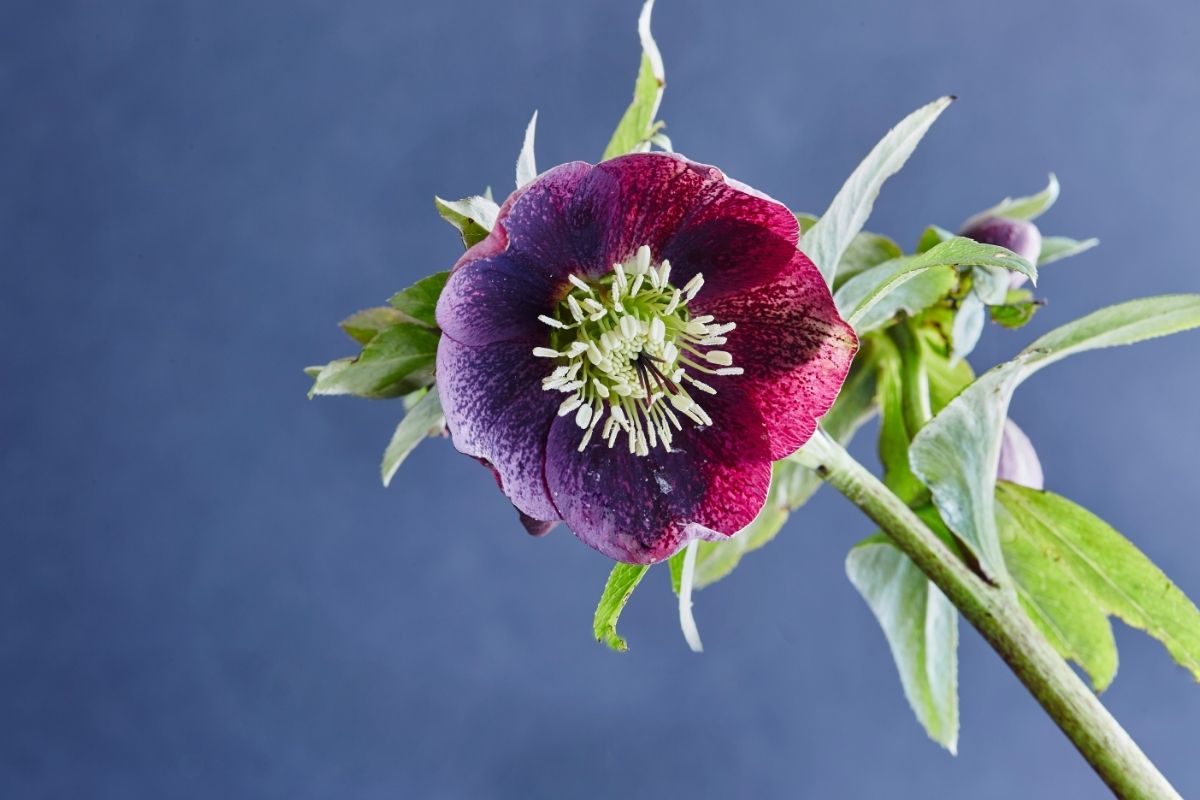
As expected from its name, this flower’s petals hold a deep purple plum shade. The shape of each petal is rounded and soft, which makes them resemble the shape of the fruit as well as its color!
There are five petals on each flower head, which form a cup shape that centers around a white and green center; the colors of the stamens and petals combine to create a dramatic contrast.
These flowers are perfect if you want to add a splash of purple to your garden. These flowers bloom between late winter and mid-spring and do well in partial or full shade, and well-drained soil.
Chinese Plum Flower

The Chinese Plum flower is actually the national flower of China and has been since 1964. The trees on which these flowers grow can last for thousands of years, meaning that these flowers have been providing color and life to their surroundings for longer than we can comprehend!
Upon each flowerhead are five petals, all of which are a bright pink shade. The pink of these flowers is so intense that it is hard to believe that it is natural, but it is!
Because it is the national flower of the country, it has a lot of symbolism for China. For example, because these flowers can survive even in harsh cold winters, they are a representation of the faithful and determined nature of Chinese nationals.
Japanese Plum Flower
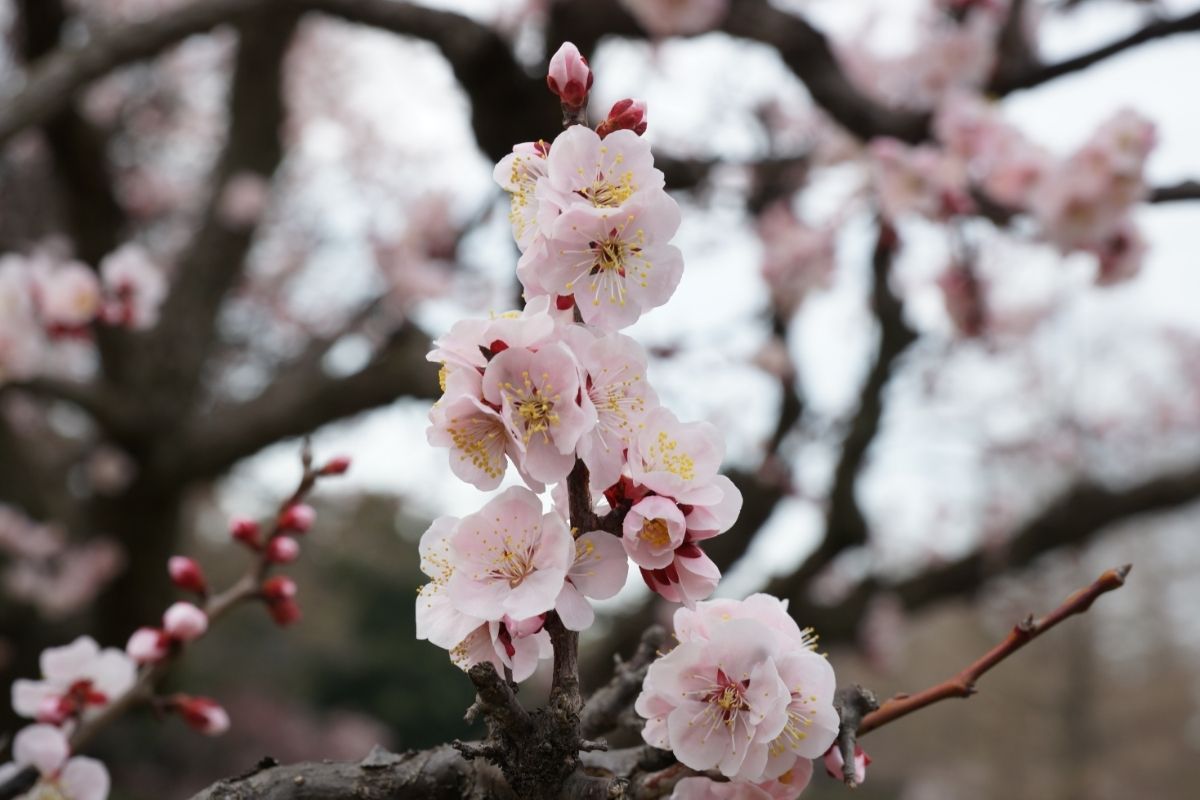
Sometimes called the Japanese Apricot flower, this plant is a descendant of the Chinese plum flower, and has been an important part of Japan’s culture for hundreds of years now.
We have all seen the photos of the Japanese parks and streets lined with beautiful pink cherry tree blossoms, but before those came into popularity, it was the Japanese plum tree that was most popular in the country.
Like the famous cherry blossoms, these flowers have a brilliant pink color, that ranges from light pink to deep and saturated Fuschia.
These Japanese blossoms usually bloom throughout spring, and plum fruits called Umeboshi are borne soon afterward – although they taste nothing like the sweet plums we are used to in the States.
June Plum Flower
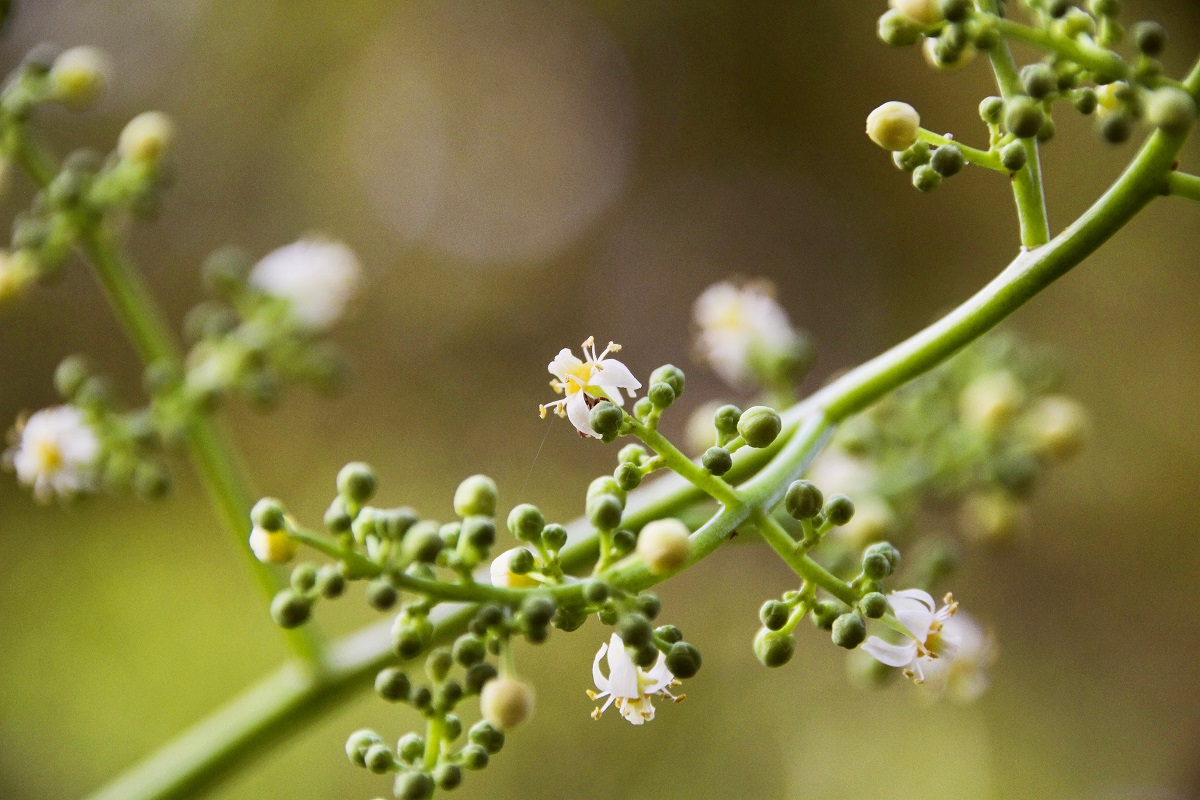
Commonly found across Polynesia and other tropical areas of the world, this flower grows on trees that produce small yellow plum fruits. The flowers themselves are not plum-like in color or in shape, but are instead very small and grown along long thin stems.
Each flower head is tiny, and bursting with bright cream petals and stamens, which contrast beautifully with the green of the plant’s leaves.
Date Plum Flower
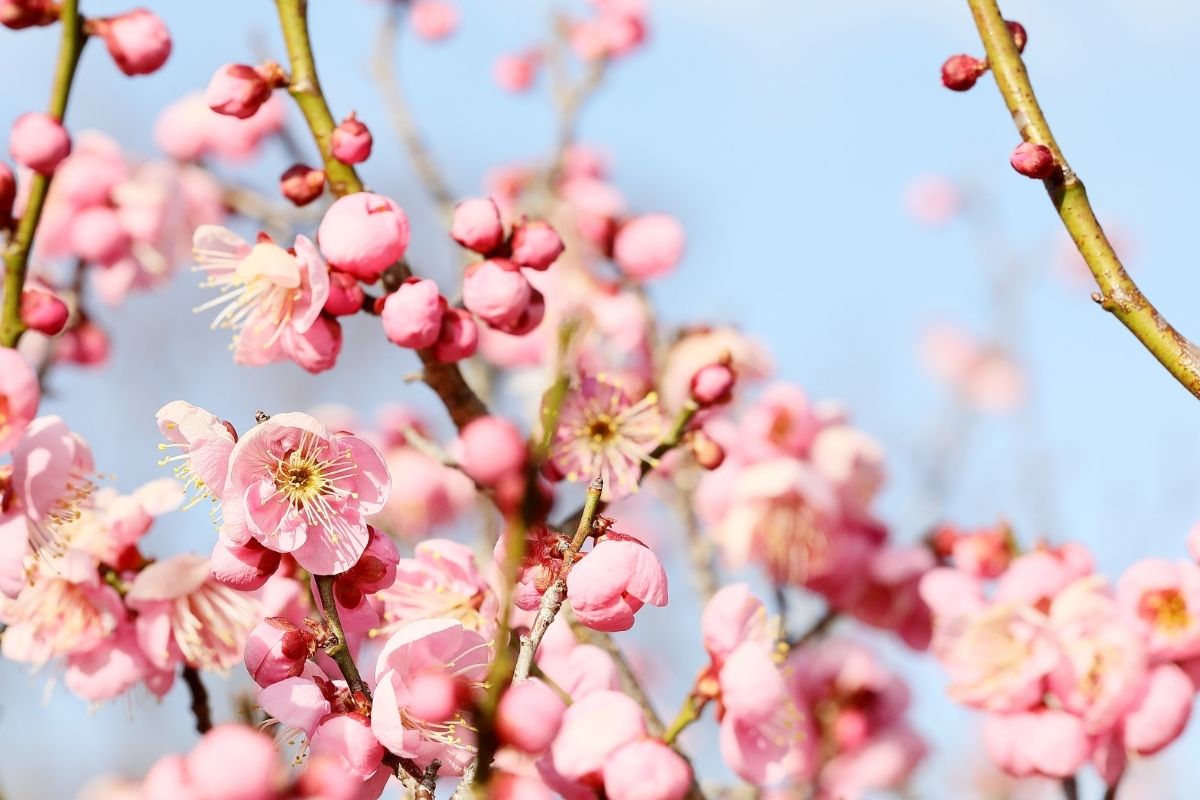
Formally known as Diospyros Lotus, this plant grows inedible fruits. Although that may make the tree seem somewhat useless, the flowers that bloom across summer have convinced us otherwise.
The male flowers that grow on this tree are really small and have light green petals which grow to form the shape of a bell. The female flowers tend to be a white color but can also have a pink blush to them.
The male flowers grow in groups of up to three, and the female flowers grow individually and form rows of hanging flowers. Both types of flowers on the date plum tree are gorgeous, and they can both exist on the same tree.
Pigeon Plum Tree Flowers
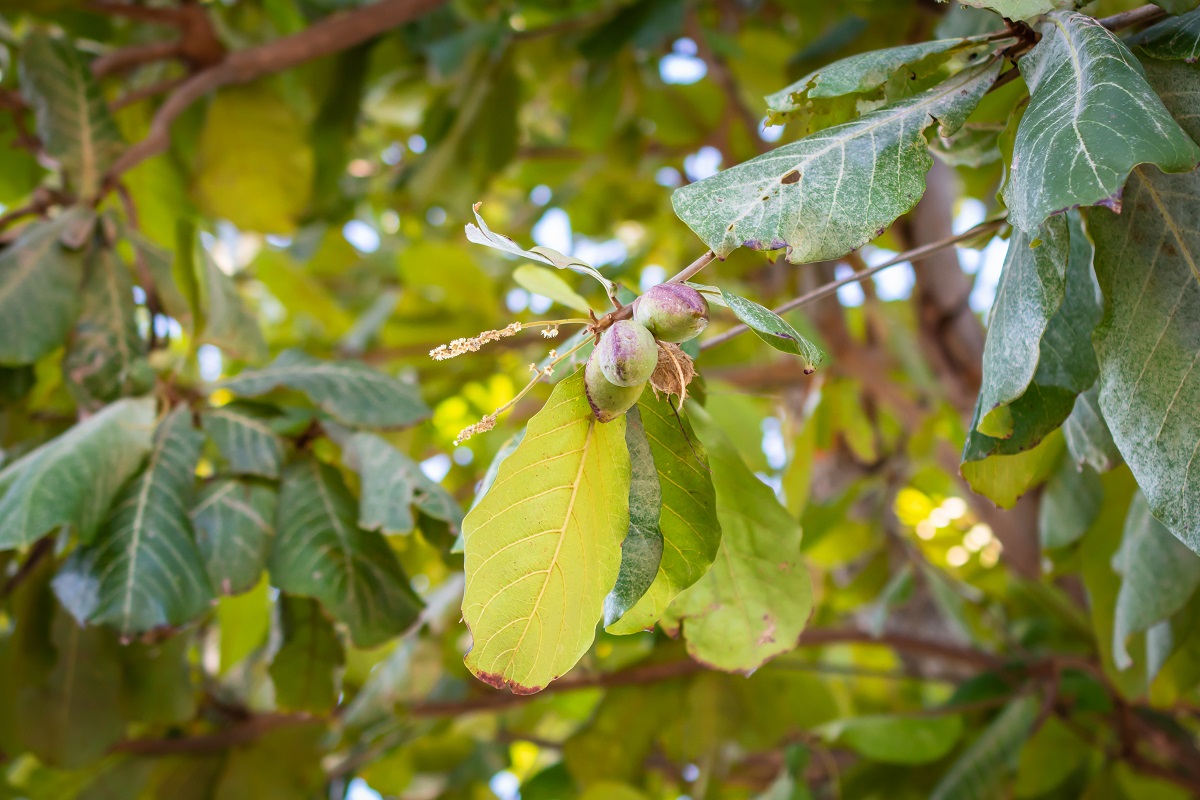
These trees grow blossoms that are white, as opposed to the typical pink plum flower. The flowers grow in clusters along long thin branches, called racemes, and can bloom throughout the seasons.
However, they tend to bloom most frequently in early summer. Following the flowers’ bloom, this tree grows dark reddish-purple fruits in fall and winter.
Chickasaw Plum Tree Flowers

These tall trees have dark green leaves that are adorned with flowers in winter. The flowers on this plum tree are white, and emit a pleasant fragrance at their height of bloom. Each flower has around five petals, which center around long white stamens with bright yellow anthers.
The yellow and white combine to give an attractive and fresh appearance, and make these flowers very appealing to a variety of wildlife.
Pissard Plum Flowers
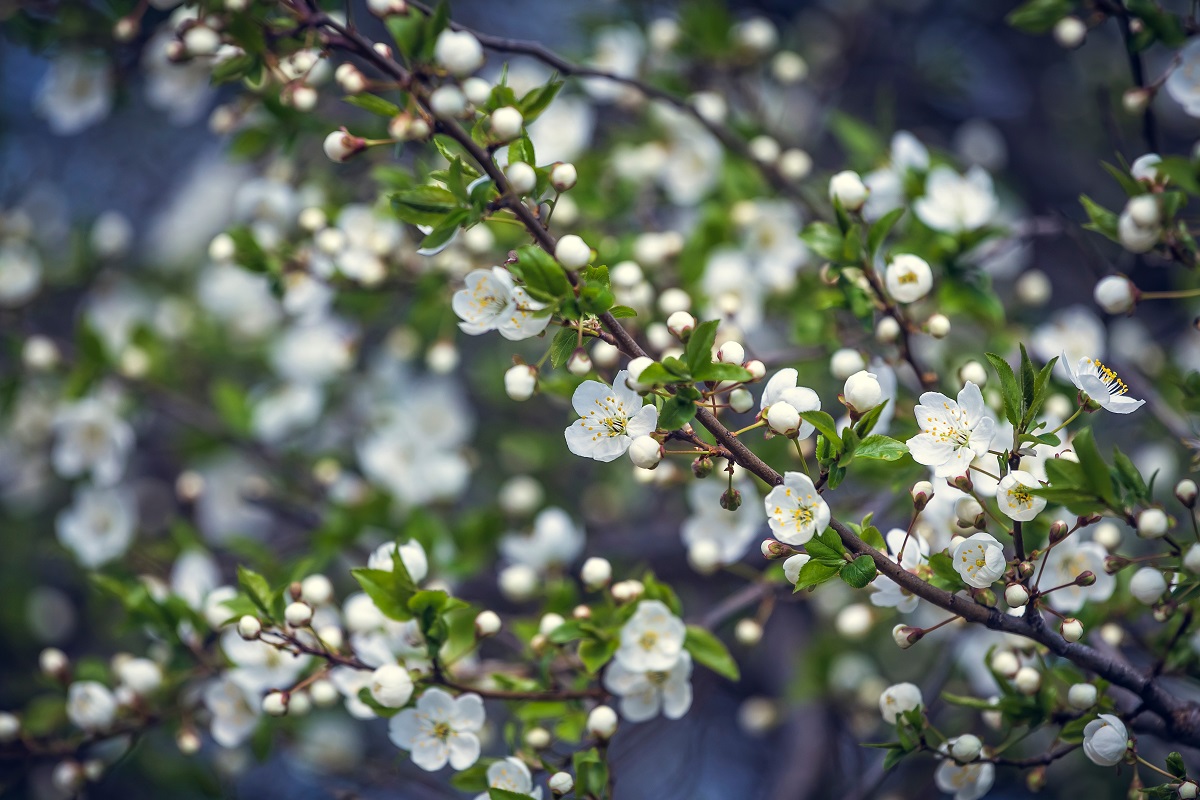
The Pissard tree grows fleshy purple plum fruits that attract a range of animals, from birds to squirrels. The flowers on this tree are shades of both pink and white, and are quite showy!
The flower features five petals, of either white or pink or a mix of the two, which center around long pink stamens. The flowers bloom primarily in spring.
Krauter Vesuvius Plum Flowers
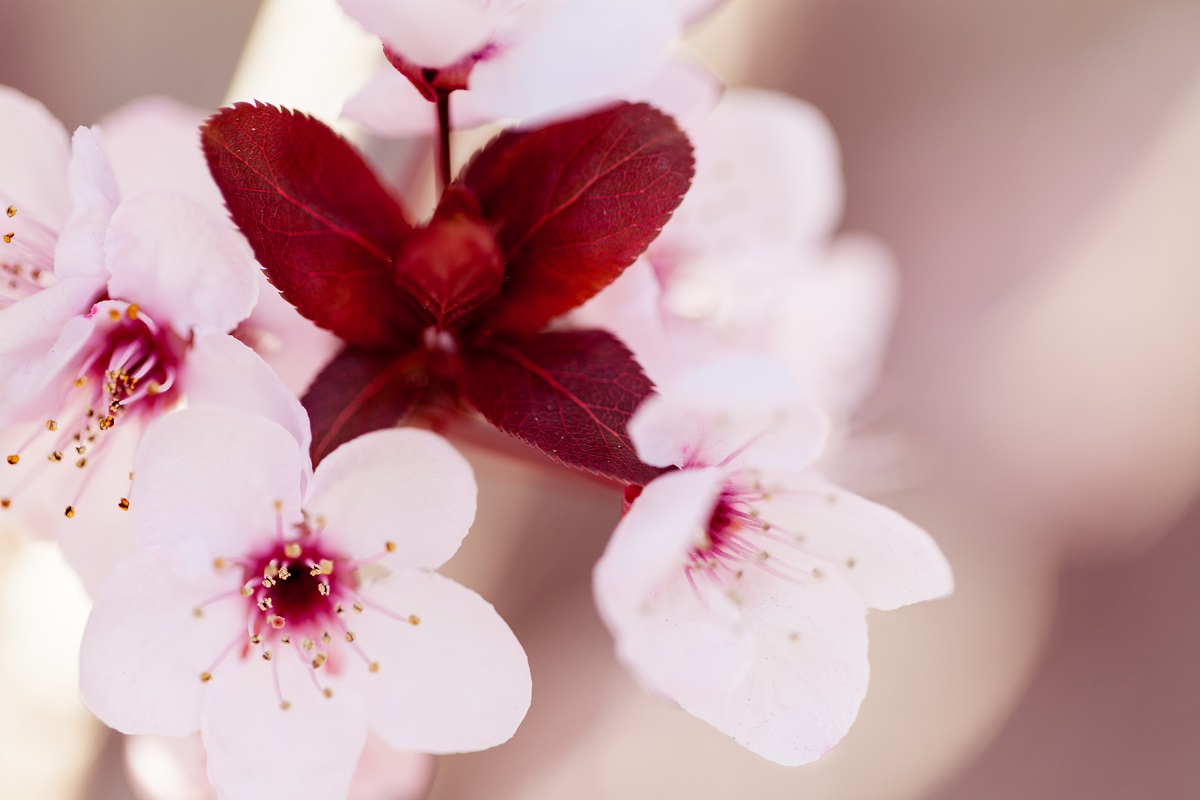
This tree is also known as the Cherry Plum Tree. The leaves of this tree are uniquely dark and purple and are matched with similarly colored flowers.
The flowers have five petals, which range in color from white to deep purple, and have dark purple centers which match the leaves of the tree. The flowers are really fragrant and tend to bloom in clusters in springtime.
These flowers are often used as part of floral arrangements and displays because of their beautiful colors and delicate shape.
Dwarf Ref Leaf Plum Flowers
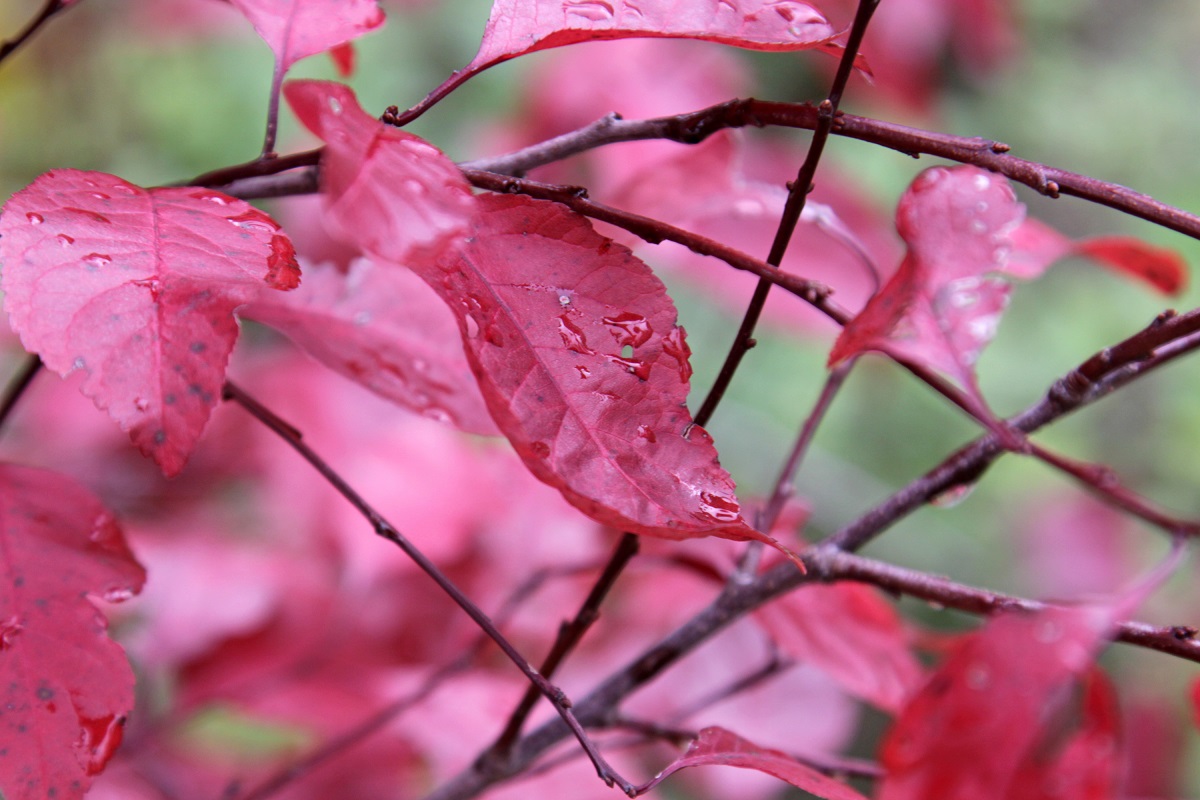
This small tree has deep red leaves but has also been known to have orange and yellow foliage. The flowers on this plant grow between late winter and mid-spring and are very appealing to a variety of pollinators, including butterflies and birds.
Each flower grows between one and two inches in diameter and has pink petals, that can range from light whitish-pink to deep crimson. In the middle of each flower is a collection of dark purple stamens, which are topped with purple anthers.
Because of this, each flower is vibrant no matter what the color of the petals is. The best thing about these flowers is that they produce a beautifully sweet fragrance.
Goose Plum Flowers
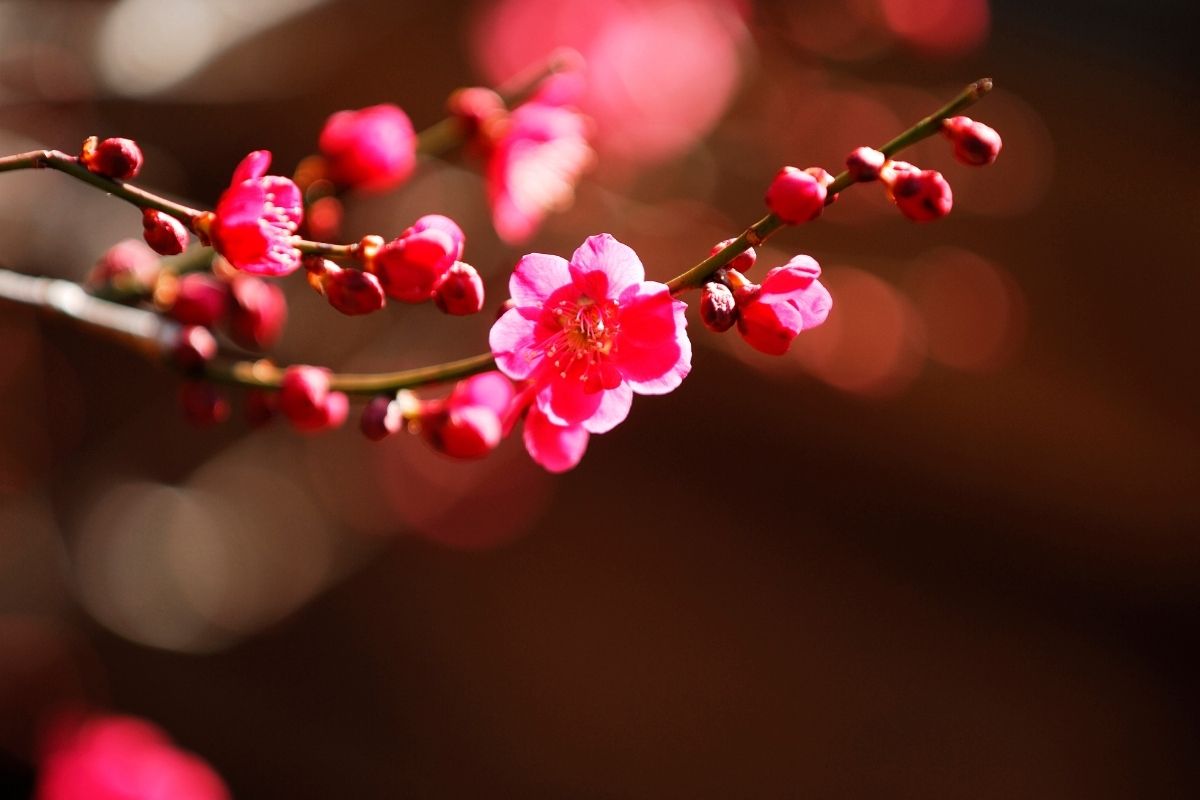
This plant is an American type of plum tree, found across the USA and Canada. Its other names include American Plum, River Plum, Wild Plum, or the scientific name Prunus Americana.
The flowers on this plant grow on little shoots in groups of up to four flowers, each of which has a diameter of around one inch. The flowers have a very strong fragrance and are white in color. They flower primarily between April and May.
Mexican Plum Flowers
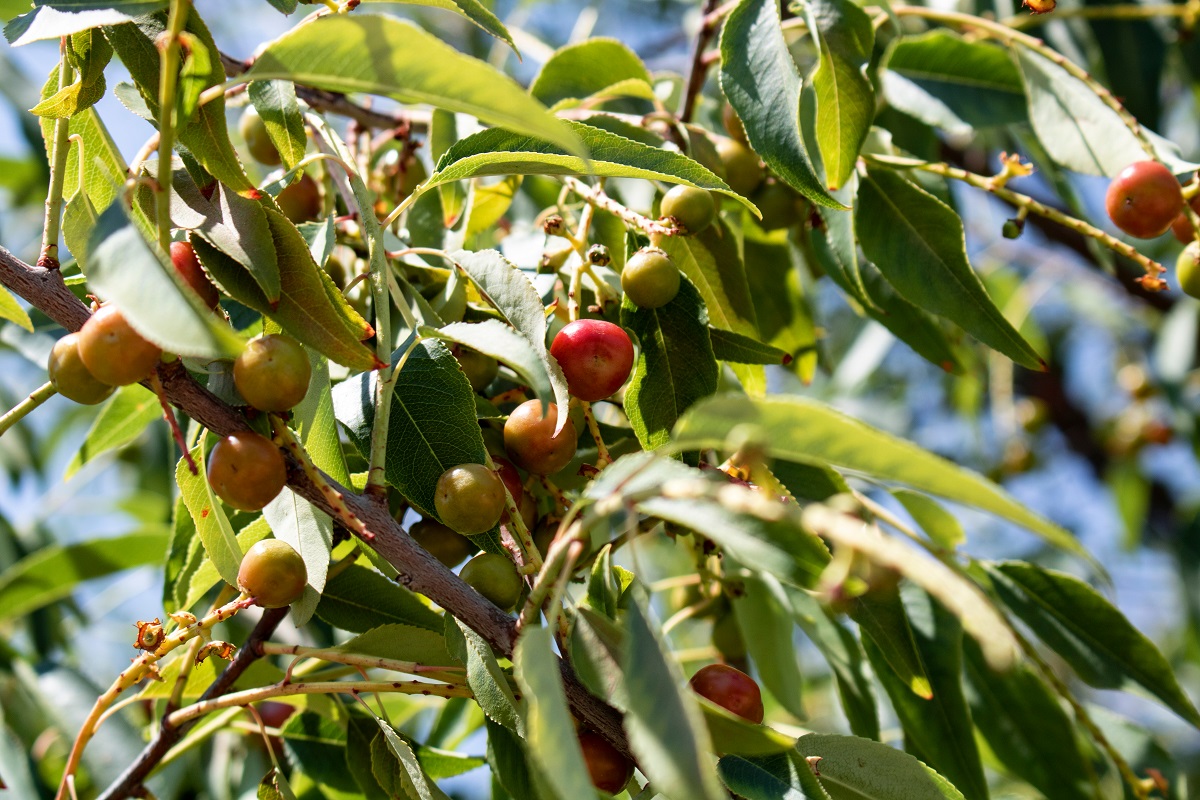
The fruit that this tree grows is not only attractive to birds and bees, but humans make it into jelly, too! The flowers on the Mexican Plum tree grow in February and March and are very fragrant.
The blossoms have white petals and long white stamens which are adorned with bright yellow anthers. They grow in clusters and their overall appearance is refreshingly vibrant and bright.
Flatwood Plum Flowers
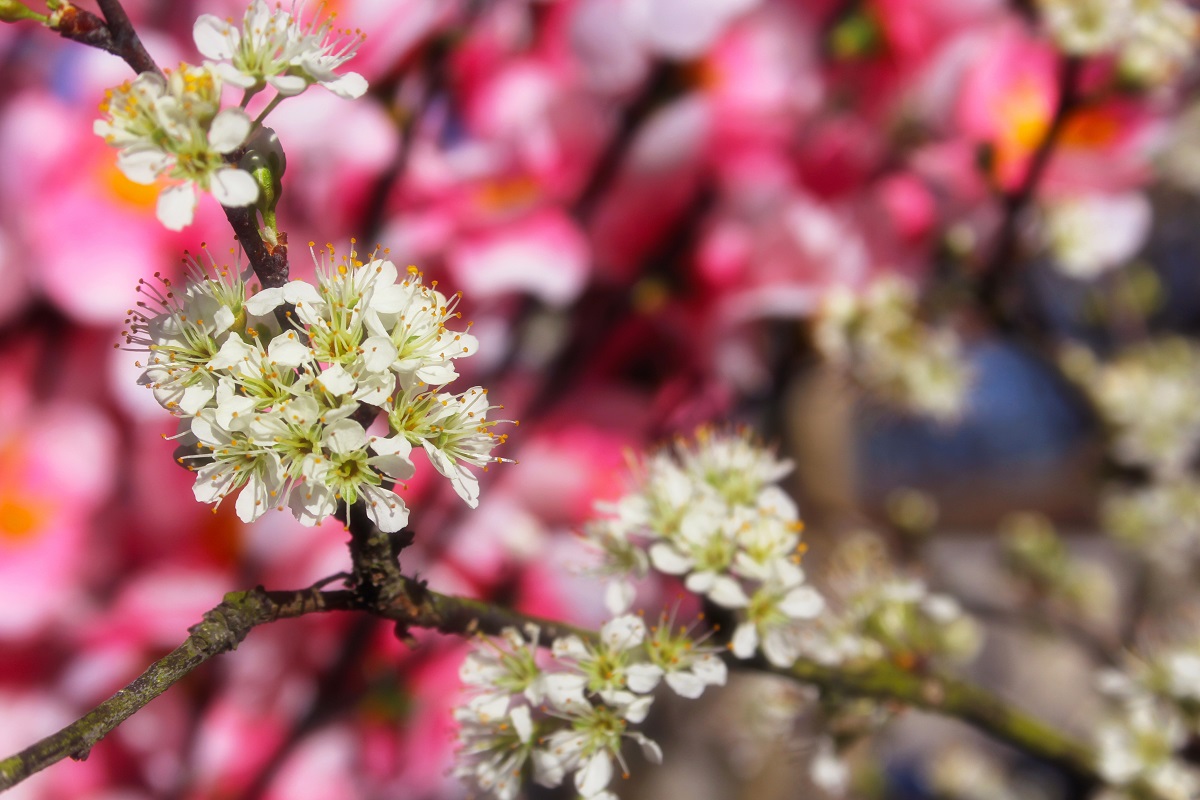
The flowers of the Flatwood Plum bloom throughout spring and summer, before turning yellow dropping off in fall. Each flower – when it is first blooming – has five white petals, and each stamen is topped with a bright yellow anther.
The petals are delicate and oval-shaped, and the flowers are attractive to all kinds of pollinators. Unfortunately, the bloom time for these flowers is short and they only show for around a month. But when they do show, they are undeniably gorgeous.
Plum-Colored Flowers
As well as the flowers that grow on plum trees, flowers that have the purply color of the typical plum of the Western world can also be called Plum Flowers.
Because of this, we have decided to include a few purple-hued blossoms that are unrelated to the plum tree, but which are still often referred to as plum flowers.
Salvia

This flower is similar to lavender in its shape, but it has a much more red-oriented purple than lavender does. The little flowers grow outwards from their long stem, and each petal has a rich plum color. These flowers seeds very easily, so they must be well-contained if you do not want a whole field of them!
Bell Heather
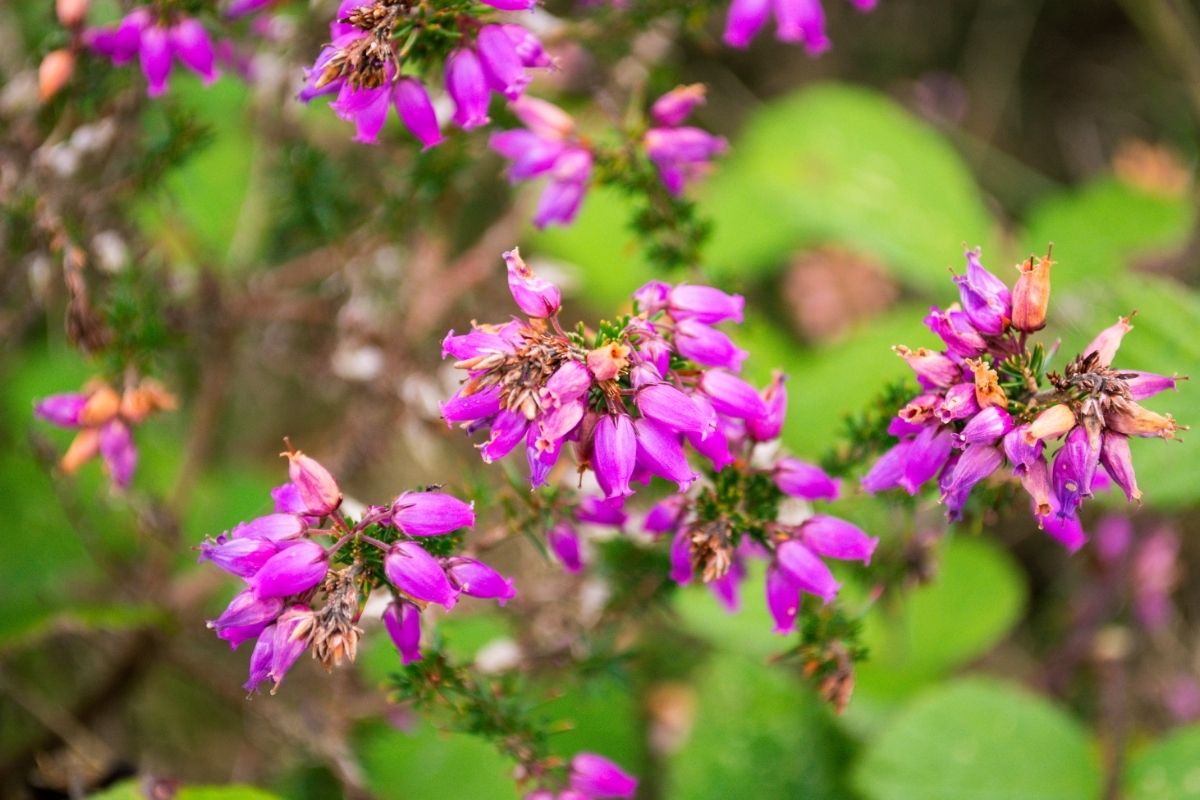
These flowers grow on short shrubs close to the ground. They get their name from the bell-like shape that each flower’s petals form. The petals have a creamy purple color, similar to that of slightly unripened plums. These plants are often used as ornamentation besides walkways and garden paths.
Cattleya Orchid
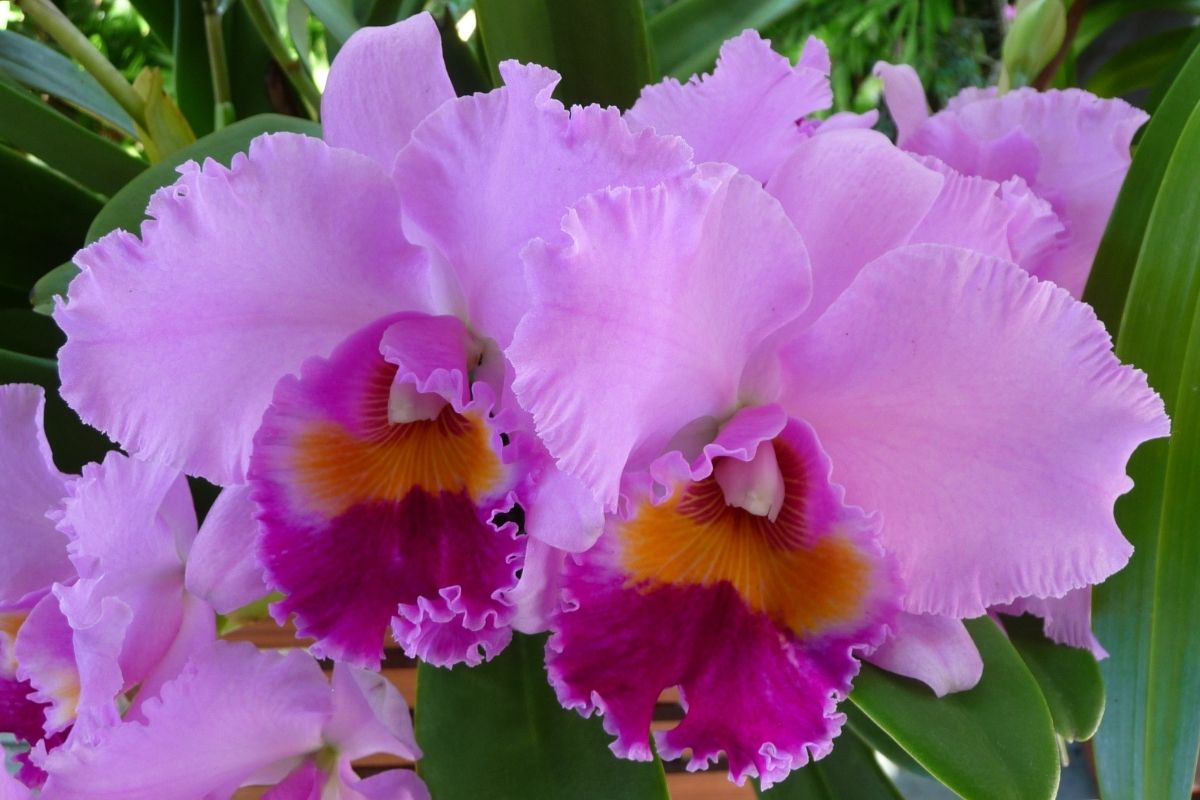
This next flower is absolutely breathtaking. Delicate petals grow outwards from a yellow center and frill at the edge, making these flowers look dainty and elegant.
Although the bulk of the petals is a light purple color, the center petal has a deep reddish-purple color, which is why it is on this list. This is one of our all-time favorite purple flowers.
RELATED: 50 Types of Orchid Flowers You Need to See (Including Pictures)
Purple Calla Lily
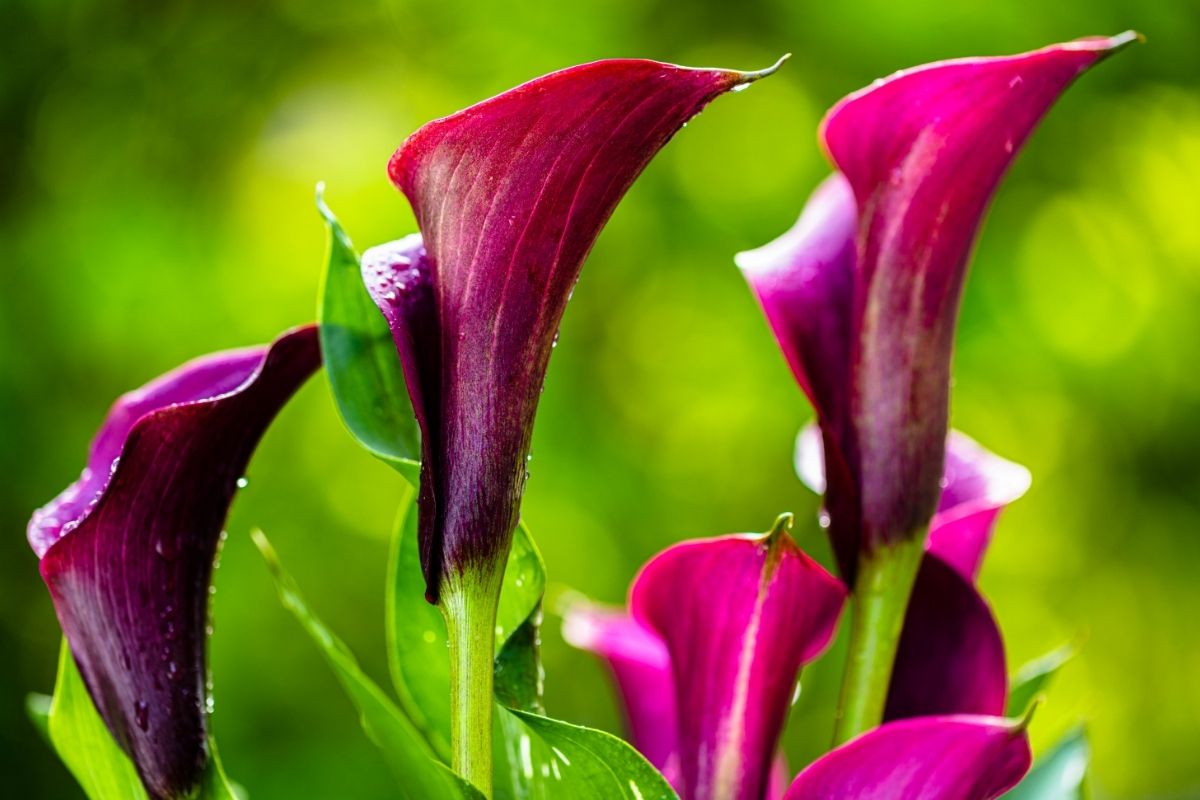
Once you see this flower, you will understand immediately why it is on our list of plum flowers. Each flower has just one solitary petal, which wraps around a cool white center.
The color of this one petal is the reason behind its beauty: it is a dark purple color that matches almost exactly the color of the plums we see in grocery stores everywhere here in the US. The hues are so juicy that this flower looks good enough to eat!
Fuschia

This next flower is commonly used in hanging baskets because of the way that each flower grows downwards and hangs elegantly.
The colors of the petals are a mix of red and deep purple, which combine to resemble the plum fruit. These flowers are so beautiful and would be the perfect addition to any garden or basket.
Waxflower
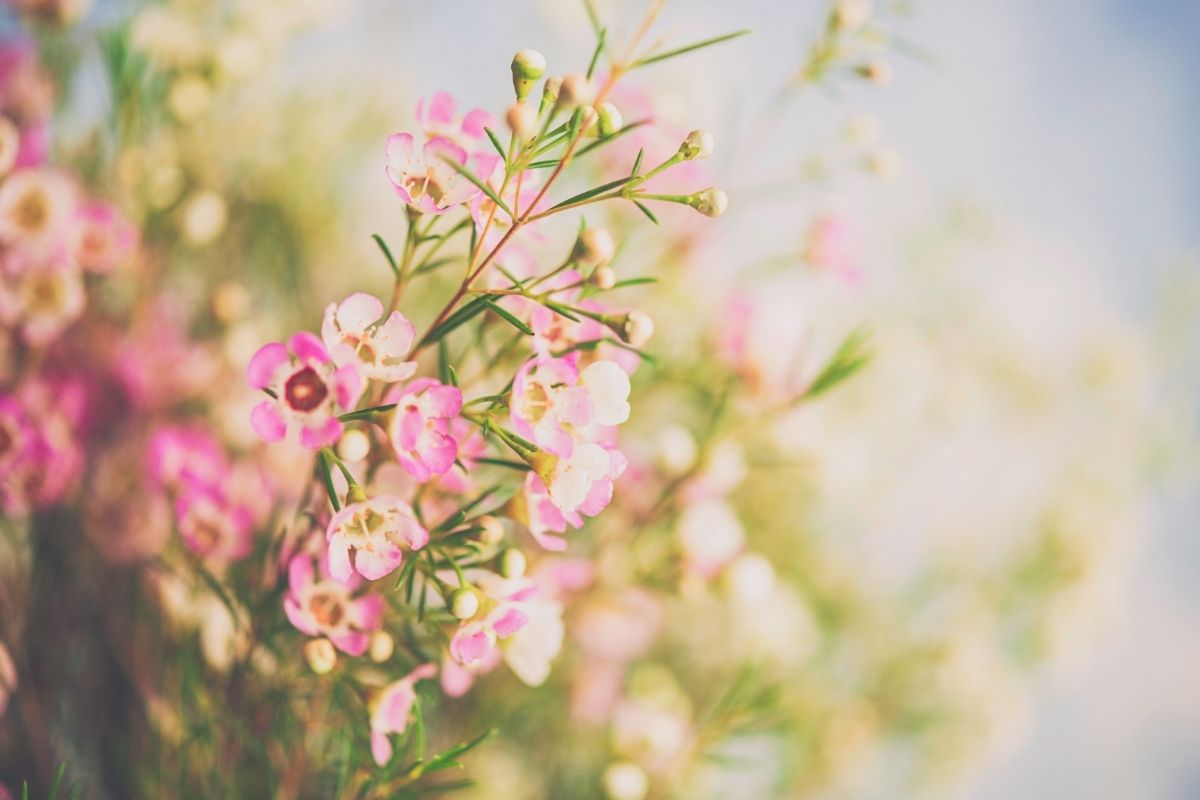
This winter-blooming flower has tens of long thin petals which grow upwards from its yellow anthers in the center. The shape of the petals and the yellow center make the flower look a little bit like a daisy, but the deep pinky-purple of the petals make it easy to differentiate.
Final Thoughts
Plum trees are clearly not just talented at producing succulent fruits, but they are also capable of producing some of the world’s prettiest flowers.
Some blossom flowers are so pretty that they have been transformed into a symbolic plant – China has gone as far as to make the plum tree flower its national flower! That has got to count for something.
Whether you are looking to spruce up your garden with delicate pink splashes, or whether you are looking for something white and subtle, plum trees could provide you with the blossom you are craving.







